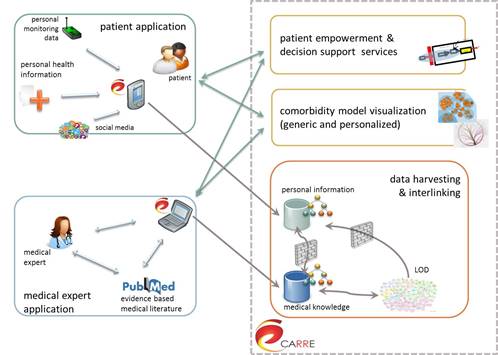Visual Builder for RDF Logical Expressions
The core of CARRE functionality revolves around the concept of comorbidity, and in particular comorbidities in the case of cardiorenal syndrome. To enable the open and seamless use and reuse of these described medical risk factors, we have developed an on-line web based system for their description. Also, the resulting risk factor descriptions are available…










